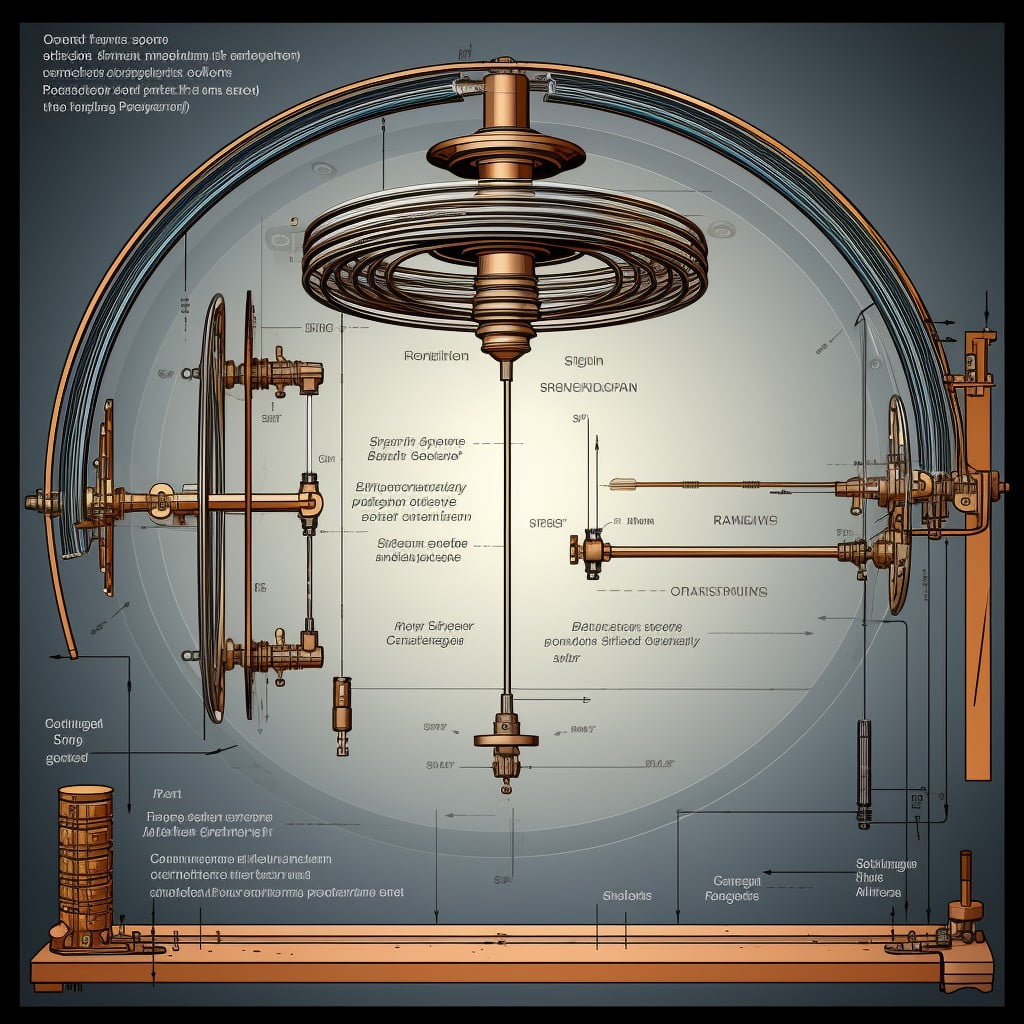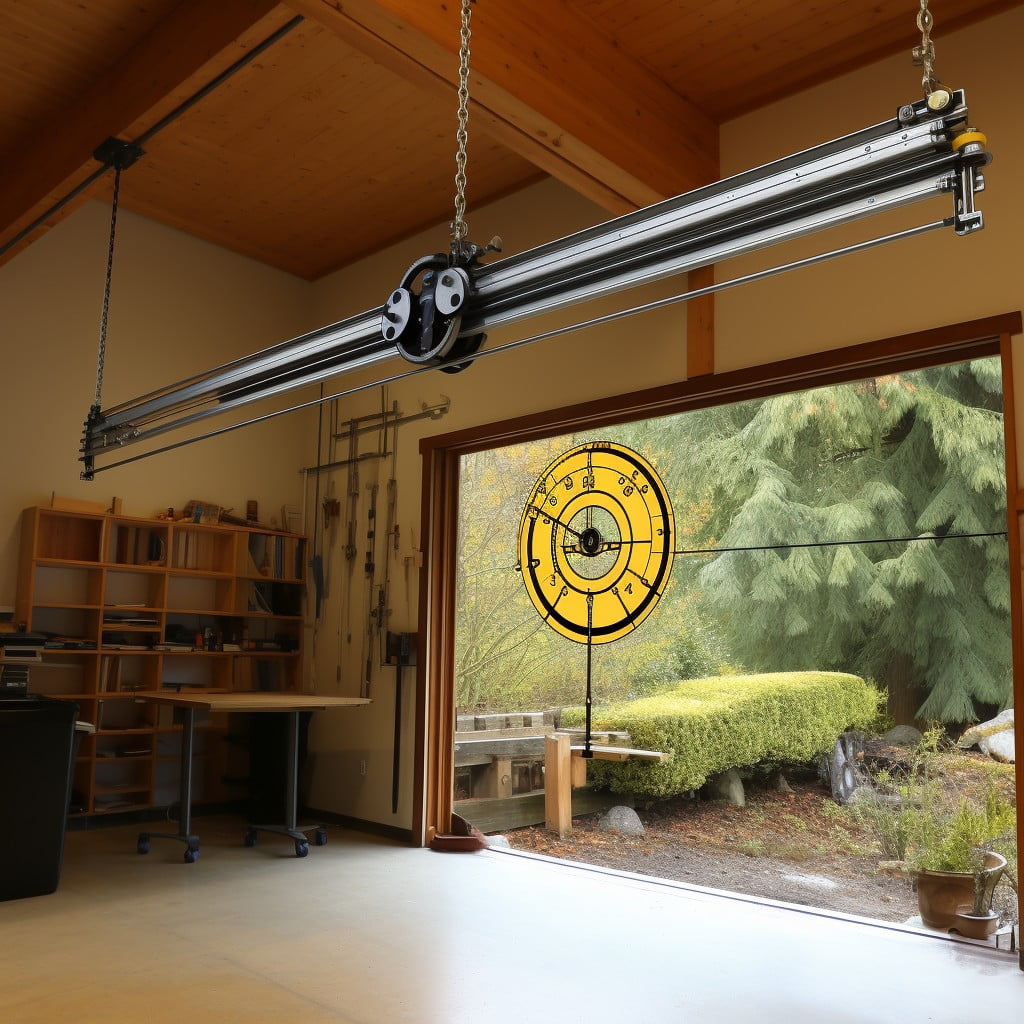Discover the straightforward process of accurately measuring your garage door springs to ensure optimal performance and longevity.
Measuring garage door springs is a crucial task for ensuring the smooth operation of your garage door, and it’s simpler than you might think.
This article will guide you through the process step-by-step, covering everything from identifying the type of spring you have to taking accurate measurements.
We’ll delve into the details of measuring the length, inside diameter, and wire size of your garage door springs.
By following the instructions here, you’ll be able to find the precise measurements needed to replace or repair your garage door springs effectively.
Key takeaways:
- Identifying wind direction is crucial for choosing the right replacement spring.
- Use a ten-coil methodology to measure the wire size accurately.
- Properly wound springs ensure proper functioning, safety, and longevity.
- Measure the inside diameter by excluding the coil and use standard measurements.
- Compile accurate measurements when ordering new springs to prevent malfunctions.
Determining the Wind Direction of Garage Door Torsion Springs

Observing the end of the spring reveals its wind direction. A “left wind” refers to the one that, when viewed from above, moves in a counter-clockwise direction. Consequently, a spring winding in a clockwise direction when viewed from above is called a “right wind“.
To solidify your understanding, consider this simple trick: Position yourself at the back of the spring, if the end of the spring points to the right side, it’s a right wind. However, if it points to the left, it’s a left wind.
Remember, identifying the wind direction is crucial, as it helps you choose the right replacement spring when needed.
Measuring the Wire Size of Garage Door Torsion Springs

For accurate measurements, use a ten-coil methodology. Stretch out the spring’s coils then count ten of them. The length across these coils, in inches, gives you the wire size. Here’s a brief step-by-step for clarity:
- 1. Straighten the spring, ensuring it’s secure and not under any tension.
- 2. Count ten coils on the spring, marking the first and tenth coil.
- 3. Measure the distance between your marks, ensuring the tape measure is aligned flat against the coils.
- 4. This distance will then be divided by ten to give the wire size for each coil.
It’s crucial to note that precision is key when measuring the wire size. Even a slight discrepancy can significantly impact the functioning of the garage door. Rounding to nearest 1/16th of an inch typically offers the best results.
Why Spring Wind Direction Matters

Understanding the wind direction of garage door springs is crucial. Here’s why:
1. Proper Functioning: The winding direction affects how the torsion spring works. For the door to operate effectively, the right wind spring needs to be on the right side of the center, and the left wind spring on the left side.
2. Safety Concerns: Incorrect wind direction can potentially cause an accident. It can lead to an instant release of tension when opening or closing, making the garage door drop suddenly, which can be dangerous.
3. Lifespan: An incorrectly wound spring impacts the lifespan of your garage door springs. It causes undue wear and tear, leading to early failure.
4. Installation: Right and left wind springs are installed differently. Therefore, knowing the wind direction will help you install the springs correctly, reducing set up issues.
Measuring the Inside Diameter of a Garage Door Torsion Spring

To accurately measure the inside diameter of your garage door torsion spring, you will need a tape measure, a ruler, or calipers. The measurement should be taken from the inside edges of the spring, from one side directly across to the other.
Bear in mind, the inside diameter doesn’t involve the coil itself, so make certain you’re measured distance excludes any part of the coiling wire. For greater accuracy, perform this measurement in a few different spots along the spring to account for any possible irregularities or distortions in the spring’s shape.
It is also fundamental to note two primary standard measurements for residential springs – 1 3/4 inch and 2 inch, and for commercial springs – 2 5/8 inch, 3 3/4 inch, 5 1/4 inch, and 6 inch. These measurements help to identify the right replacement torsion spring.
Lastly, it’s important to conduct this process with safety precautions. Although you’re only taking measurements, mishaps can happen and these springs are under tremendous tension, capable of causing serious injury. Safety glasses are a recommended precaution during this process.
Measuring the Overall Length of a Garage Door Torsion Spring
With exposed springs, obtaining the overall length is a straightforward task. Start at one end and measure straight across to the other end, ensuring your measuring tape is kept taut.
However, for unexposed springs that are potentially in a contracted state, you must consider the number of coils. Measure roughly 10 coils first, and record the measurement. This number gives you an essential clue on the diameter of each coil. To find the overall length, calculate the diameter of a single coil (i.e., the 10-coil measure divided by 10) and multiply it by the total coil count.
Keep in mind also, there’s often a small length of unwound spring at each end, so be sure to include these in your measurement. Remember that precise measurements lead to optimal functioning, so double-check for accuracy before moving forward.
Measuring Intact Garage Door Springs
When dealing with an intact spring, begin by measuring the inside diameter. Use a tape measure to calculate the distance across the center from one side to the other, in inches. Note this value as it’s a central part of your measurement.
Next, shift your focus to the wire size, which can be measured in two different ways. The micrometer method, where a calibrated micrometer is used to measure the peak-to-peak distance of ten consecutive coils and divided by ten, comes up with the most accurate results. Alternatively, if a micrometer is not available, you can use the 20-coil count method where the measurement taken is divided by 20.
Lastly, turn to overall length. Here, precision is key. Measure the entire length of the spring, ensuring the tape measure is tight, and no slack is involved.
Remember, utmost care must be exercised while handling intact springs due to their high tension, to avoid any potential accidents.
Measuring Broken Garage Door Springs
When dealing with a broken spring, caution is paramount! Always ensure safety is at the forefront.
To start, gather two critical measurements: the overall length and the inside diameter. The overall length is often broken into smaller segments due to spring damage, hence, measure each piece separately then add the results.
When measuring the inside diameter, use a tape measure across the center of the spring – not the edge.
If the spring is too damaged to accurately measure the diameter, measure ten coil sections instead. Divide this number by ten to give you the accurate wire size. This wire size can be cross-referenced with standard size charts to determine the diameter.
Always remember to double-check your measurements to ensure accuracy. Precise data will save time, money, and prevent further damage when ordering replacement garage door springs.
Understanding Garage Door Torsion Spring Size Charts
First and foremost, remember that the size chart comes in different format depending on manufacturers yet two main factors define garage door spring compatibility: wire size and overall length.
Wire size is measured in inches or millimeters and can be determined by measuring 10 or 20 coils, then dividing the measurement by the number of coils measured.
For a precise spring size match, consult a chart that converts these measurements to specific wire sizes. Each wire size typically corresponds to a different color code, simplifying the identification process.
The overall length, on the other hand, considers both the active (coiled) and passive (uncoiled) components of the spring. A detailed table or graph will illustrate the correlation between spring lengths and the door weights they can support.
Interior diameters are more uniform and often listed clearly on the chart. Generally, a larger spring will require a larger diameter.
Still feeling confused? Keep in mind that professional garage service companies usually have these charts on hand, as well as the expertise to explain them. Seeking professional consultation can save you time and prevent potential errors.
Preparing Information for Ordering New Garage Door Springs
Once you’ve completed the necessary measurements, it’s time to compile the data for a new order. Here’s what you need to do:
1. Record the diameter, wire size, and length: It’s best to jot down all measurements for easy reference. Information such as the inside diameter, wire size, and length are crucial for obtaining the correct replacement.
2. Indicate the wind direction: Left or right wind? The information might seem trivial, but the wind direction is essential for the spring to function correctly.
3. Spring type: The type of spring you have, whether it’s torsion or extension, should be established as it determines the fitting and operation mechanism.
4. Number of spring cycles: If known, the spring life cycle can serve as a guide to choose a spring with a similar or better lifespan.
5. Door weight and height: These can help determine the spring tension required for your garage door. The door’s weight and height will influence the size and type of spring necessary for your door to operate smoothly.
The accuracy of this data helps ensure you receive the right spring, alleviating future malfunctions or inconveniences caused by incorrect parts. Remember to exercise caution when dealing with garage door springs; they can pack a punch if not handled properly.
Guide to Measuring Clopay and Ideal EZ-Set Springs
Primarily, begin by locating the spring system on your garage door. Clopay and Ideal EZ-Set Springs are typically found mounted in the center at the top. Note the presence of one or two springs.
Measurement requires disconnecting and unwinding springs, posing considerable risk without the correct tools or knowledge.
When it comes to wire size, measuring 20 coils with a precision tape measure can help. Divide the total length by 20, giving you the exact wire size in inches. For overall length, remove the springs from the hub and measure from one end to another. These measurements are critical when ordering replacement springs.
Identifying the wind direction is also crucial – a right-hand wind has ends that point to the right when viewed from behind (spring mounted at the center), while a left-hand wind points to the left. This is critical as installation of springs with incorrect wind direction could lead to severe damage or injury.
For the inside diameter, measure the hole in the center. In most residential garage doors, the standard measure is either 1 3/4″, 2″ or 2 5/16″.
Remember, due to the tension in these springs, measuring and replacing should only be done by a professional or a knowledgeable DIY homeowner with the right tools and safety measures in place.
Cautionary Measures When Handling Garage Door Springs
Garage door springs, due to their high tension, are potentially dangerous to handle. Therefore, scoring high points on safety is paramount.
Firstly, always wear robust work gloves. Sharp edges can cause severe cuts, and gloves provide a significant degree of protection. Safety glasses are also crucial – they keep debris or a suddenly released spring from injuring your eyes.
Never attempt to remove or adjust a garage door spring without proper tools. Improper handling can cause the spring to uncoil without control, leading to injury or damage.
In addition, keep your body, particularly your face, away from the spring path. If a spring breaks or slips, it will travel along this path, so maintaining distance is crucial.
Lastly, always enlist a helper. Two sets of hands are better than one, particularly when handling larger and heavier springs. Your helper can also quickly respond in case of any accidents.
Remember, if you’re unsure or uncomfortable performing this task, hire a professional. Your safety is the ultimate priority.
FAQ
How many turns on a 12 foot double spring garage door?
A 12-foot double spring garage door requires 50 turns; calculated by following the rule of four quarter turns per foot of door height, with an added extra two turns.
What tools are necessary for accurately measuring garage door springs?
To accurately measure garage door springs, you'll need a tape measure for length, callipers or a ruler for diameter, and a spring gauge for checking tension.
How does the weight of the garage door influence the selection of spring size?
The weight of the garage door determines the size of the spring needed, as a heavier door requires a larger, more robust spring to ensure smooth and safe operation.
How often should garage door springs be measured and potentially replaced for optimal performance?
Garage door springs should be measured and potentially replaced every 7 to 9 years for optimal performance.